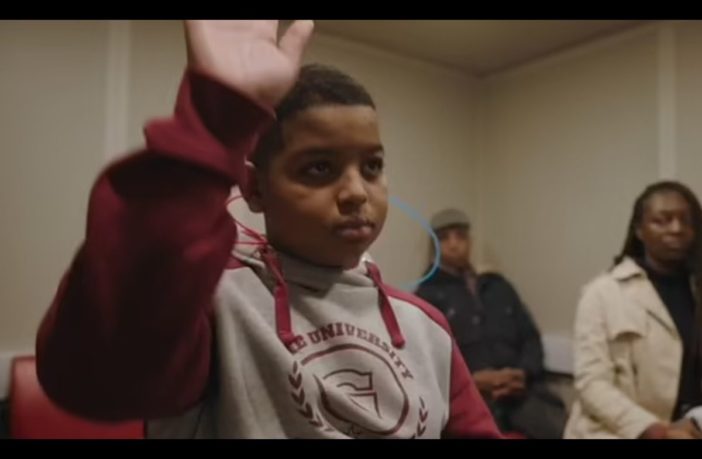A groundbreaking treatment has enabled six deaf children, ranging from ages one to 11, to experience hearing for the first time. The children, all born with a gene mutation hindering the production of a crucial hearing protein, participated in experimental groups in China and the U.S.
Scientists administered a version of the gene, known as otoferlin (OTOF), into the inner ear, prompting the cells to produce the previously missing protein, according to Daily Mail. After 26 weeks of treatment, the hearing levels of the children have improved to up to 70 percent normal.
Notable progress was observed as early as six weeks into the treatment. Videos demonstrate a one-year-old responding to his name for the first time, and another girl articulating words like father, mother, grandmother, sister, and “I love you,” which she could not do previously.
Aissam Dam, 11, experienced hearing for the first time this week at the Children’s Hospital of Philadelphia (CHOP) after receiving treatment – marking a first in the U.S.
According to Zheng-Yi Chen, DPhil, a professor at Harvard Medical School and study author for China’s experiments, untreated hearing impairment in children can lead to abnormal brain development.
Gene therapy, already approved for conditions like sickle cell disease and severe hemophilia, is now being explored for hereditary deafness. Globally, about 34 million children suffer from deafness or hearing loss, with genes accounting for up to 60 percent of cases.
Dam, who was born “profoundly deaf,” and five children in China share a highly rare abnormality in their OTOF gene, resulting in a defective gene that hinders the production of otoferlin. Otoferlin is a crucial protein necessary for the “hair cells” in the inner ear, responsible for converting sound vibrations into chemical signals sent to the brain.
Defects in the Otoferlin gene are uncommon, constituting one to eight percent of hearing loss cases at birth.
In October, Dam underwent a surgical procedure to address his deafness. The procedure involved partially lifting his eardrum and injecting a harmless virus, modified to carry functional copies of the otoferlin gene, into the internal fluid of his cochlea.
Consequently, the hair cells in his inner ear began producing the previously missing protein, enabling them to function properly.
Nearly four months post-treatment in one ear, Dam’s hearing has significantly improved, with only mild-to-moderate hearing loss remaining. According to a statement from the Children’s Hospital of Philadelphia (CHOP), Dam is now “literally hearing sound for the first time in his life.”
Dr. John A. Germiller at CHOP expressed that gene therapy for hearing loss, a goal pursued for over two decades, has now become a reality. The success in correcting a rare gene abnormality in Dam’s case may pave the way for future applications targeting the over 150 other genes causing childhood hearing loss.



